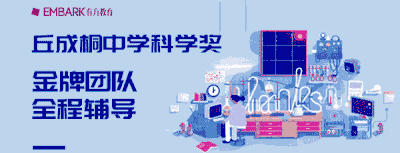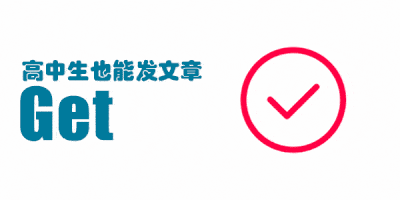1. 大赛简介
Beamline for Schools (BL4S) 是一项由位于瑞士日内瓦的欧洲核子研究中心 (CERN) 组织的国际比赛。 它面向全世界高中生开放。
每支参赛队由至少五名学生和一名成年导师组成。在本次比赛中,他们可以提出一个他们想做的物理学实验。获胜的队伍可以去位于德国的世界顶尖的加速器研究中心 DESY,并在那里和CERN, DESY的专业科学家一起做实验。
2. 比赛时间
(1) 2019年7月 开始报名:提供你的组名,国家以及导师的联系方式来接收邮件更新。
(2) 2020年3月31号中欧标准时间午夜:提案提交截止:在 欧洲标准时间午夜前提交你的1000字的提案以及一分钟视频。提案可以被提交直到截止日期3月31号中欧标准时间午夜。
(3) 2020年6月:获胜者通知:CERN和DESY宣布获胜者,获胜者会被邀请去DESY。其他最多20个shortlisted的组也会被邀请。
(4) 2020年9-10月:获胜者在DESY做他们的实验。确切日期会跟获胜者确认。
3. 参赛者要求
(1) 组员: 高中学生。
全世界高中学生,在他们第一天去实验室的时候16岁以及以上(一般是比赛当年9或10月);如果他们获胜,他们(以及最多2名成年导师)会被邀请去DESY来做他们的实验。
更年轻的学生可以是参赛队的一部分,但如果赢了比赛他们不能被邀请。参加者在提交提案的时候必须是高中或初中生。
(2) 小组人数
大于等于5名学生以及最少一名成年导师
小组的人数没有上线,但每个获胜的队伍只会有9个学生被邀请去DESY。
小组可以包括同一个学校的组员,或一些学校的组员。
4. 实验项目要求
你的组可以随意提出实验,只要这些实验不会引发危险。
5. Proposal提交要求
(1) 书写的提案
最多1000字的书写提案,可以有图示以及图片(acknowledgements以及图片内合理的字数不算在1000字内)它应该包括:
1) 你为什么想来DESY
2) 你的实验想法以及你希望如何使用particle beamline来做你的实验
3) 你希望从实验里学到什么
(2) 提案视频
用一个一分钟的视频来总结你的书写提案,用一个有创造力且有趣的方式,并且介绍组员们。
(3) 如何评估你的提案
1) 实验的可行性
2) 追寻科学方法的能力
3) 你对实验的动力以及你想来DESY/LNF的理由
4) 你试验以及视频的创造力
6. 奖项
(1)获胜队伍:两个礼拜的旅行去DESY来做实验,所用的费用会被BL4S承担(最多9个学生和2个成年导师一组)
2020的两个获胜队会赢得一个大概2个礼拜的旅行去德国汉堡的DESY 做他们提案中的实验。BL4S会承担所有获胜者参赛的费用,包括旅行,当地路费,住在DESY的费用,以及一日三餐。 在来到研究实验室之前,获胜的团队会有机会和科学家一起探讨他们对于做实验的想法,并规划实验。
(2)入围队伍:除了获胜队,最多30组会被shortlist。这些组会收到一个CosmicPi particle detector给他们的学校,以及每个组员会收到一件BL4S T恤。
(3)所有的参赛者:所有参赛者会收到BL4S 电子证书来证明你交了你的提案。
7. 往届获奖作品
| 年份 |
队名(国家) |
项目名称(带proposal pdf文档下载地址超链接) |
| 2019 |
DESY Chain (US) |
A Cross-Particle Comparison of Scintillator Characteristics |
| Particle Peers (The Netherlands) |
The difference between the development and shape of a particle shower as a result of a beam of electrons or a beam of positrons perforating graphite |
| 2018 |
Beamcats (Philippines) |
Determining the relationship between the energy of a π meson beam and its ability to penetrate and react with a carbon-based, non -biological material to determine the viability of "pion therapy" - an alternative Method for cancer treatment |
| Cryptic Ontics (India) |
The Shape of 'μ' (The Magneto-Muon Dependance) |
| 2017 |
Charging Cavaliers (Canada) |
The Quest for Fractionally Charged Particles |
| TCO-ASA (Italy) |
Liceo Scientifico Statale "T.C.Onesti", Fermo, Italy |
| 2016 |
Pyramid Hunters (Poland) |
The secret chambers in the Chephren Pyramid |
| Relatively Special (UK) |
On the special theory of relativity and the lorentz factor |
| 2015 |
Leo4G (Italy) |
More than a webcam: low-cost particle detector |
| Accelerating Africa (South Africa) |
Crystal Undulator Radiation |
| 2014 |
Odysseus' Comrades (Greece) |
A nature’s preference |
| Dominicuscollege (The Netherlands) |
Crystal calorimeter |
8. 参赛费用
没有费用,参加比赛是完全免费的。 获胜的队伍,BL4S会完全承担费用,包括路费,住的地方,以及一日三餐。
9. Examples for Experiments that can be done at the DESY Beam Lines
Beamline for Schools 2019
Note:
Please note that in order to succeed in Beamline for Schools you can either propose a creative experiment or idea yourself or take one of the examples and work out the details of that experiment.
Example 1: Explore the world of antimatter 探索反物质世界
The particles in the beam at the DESY beam line are either electrons or positrons. Some of the properties of antimatter have only been theoretically predicted but never been measured in an experiment. Right now, professional physicists at CERN are preparing experiments to measure the effect of gravity on antimatter or to observe its hyperfine structure. While such experiments are not feasible within the boundary conditions of BL4S, you could compare the properties of electrons and positrons, for example by observing how they are deflected in a magnetic field.
Example 2: Characterization of MicroMegas (or other) detectors MicroMegas检测器的特征
Recently, the Beamline for Schools scientists built four state of the art MicroMegas detectors. Studying them in full is a long ongoing process that requires a series of measurements in a number of conditions. What is the maximum rate of the detectors? What is their spatial resolution? How do the environmental conditions affect their performance? Many more questions are waiting to be answered. Propose a series of measurements at the DESY beam lines that will allow the characterization of the detectors and will expose their limits. This is your chance to drive our continuous R&D efforts.
MicroMegas are not the only detectors at your disposal. Feel free to browse the "beam and detectors" document and propose a series of measurements to study any one of them and help us to improve them.
Example 3: Measure the beam composition of the DESY beam line at various beam momenta 在不同的光束力矩下测量DESY光束线的光束成分
The 6.3 GeV/c primary electron beam of DESY II impinges on a carbon fiber target producing photons, which are then converted again into electron/positron pairs. The secondary beam line is set up to select the particles of various momenta, between 0.5 and 6 GeV/c. This selection is based on the deflection in the bending magnets and the collimators.
The momentum composition of the beam is well known but we at Beamline for Schools have never measured it. Propose a series of measurements to measure the momentum distribution or to identify different particles and in the process, you may discover rare particles that are not described in the “Beam and detectors” document.
Example 4: Measure beam absorption properties of materials 测量材料的光束吸收特性
Find out how many electrons survive different materials! Can you look inside an object using the electron beam as it can be done with x-rays? Please note: Only non-combustible, non-biological materials can be tested at DESY. Can you measure the energy of a particle after it has passed through some material?
Example 5: Generate your own photon beam 生成自己的光子束
While we cannot generate a photon beam directly, you could generate photons by using the electron beam scattering at a target, generating a Bremsstrahlung photon and then use a magnet to remove the remaining electrons. How can you measure the energy of the photons?
Example 6: Searching for new particles 搜索新粒子
Many theories predict new very weakly interacting particles, which pass through matter almost without any interaction. These particles can be produced by dumping a particle beam onto a beam dump and then searching for particles behind the dump. No known particles besides the occasional muon should pass through the dump, so if one is detecting particles there, this could be evidence for new physics.
Example 7: Build and test your own detector 构建并测试您自己的检测器
Design your own detector and calibrate it with the beam at DESY! A particle detector does not have to be a high-tech device that is beyond the reach of a team of students. In the early days of particle physics, cloud chambers and photographic emulsions have been used as particle detectors. Even some electronic detectors are not that complicated to make.
10. BL4S submission form 2020: information needed
请在报名时有以下的信息:
1. 关于团队:
(1)队名
(2)学生学校代表的国家
(3)代表学校
(4)学校代表的城市
(5)导师的联系方式(全名,邮箱以及手机号)
(6)队伍的导师数量(1或2)
(7)一个队一共有几个学生
(8)队伍中男性以及女性数量
(9)在2020年9月1号时小于16岁的学生数量
(10)参赛者的名字(应与证件上一致)
(11)所有参赛者的T-shirt大小万一他们被shortlist(女性:S,M,L,XL 男性:S,M,L,XL,XXL)
2. BL4S 提案以及地址
(1)pdf形式的提案
(2)提案字数
(3)视频链接
(4)视频一共几秒
(5)你的学校或组织全地址(万一获奖或被shortlist)
3. 关于以下话题的调查
(1)跟着提交过程的难度
(2)你的学校/学校们有没有参加过BL4S
(3)你的参赛有没有被2020年在DESY的地址所影响
(4)大概了解CERN以及DESY的学生以及他们的研究
(5)你从哪里得知这个比赛
(6)你们组在提案上花了多少小时
(7)你的组有没有跟BL4S的national contacts联系




